Content Governance: Categories vs. Tags
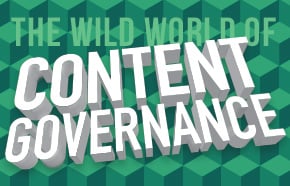
Your blog has a sprawling list of tags and categories. How can you build a taxonomy that helps your customers find what they’re looking for?
Content governance is a term that is used to describe a series of practices for dealing with content in the real world: when there’s not enough time, too many people making decisions, and a perfectly laid plan goes slightly awry, resulting in outdated, sprawling content.
In this post, we’ll discuss the difference between categories and tags on a website, how they are commonly used, and how often to review them.
What are Categories?
Categories broadly describe the major topics of a blog or website, and can aid customers in finding the information that is most relevant to them.
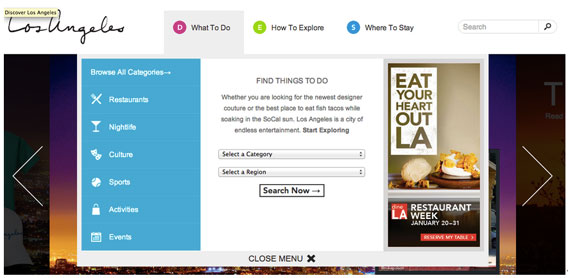
Your editorial team should lock down a short list of categories prior to site launch. For existing websites, plan on reviewing your list of categories once a quarter or once a year to make sure that they are still serving your marketing goals and your audiences’ goals.
Manage Categories Separately, as a Distinct Content Type
Ask your web developer to set up your categories as a separate list instead of asking content creators to add a new category when they publish a blog post. Instead, during the blog post publishing process, a content creator should be able to categorize a post by checking a box in a short list of categories. This will prevent people from creating a lot of blog categories that you don’t want or need.
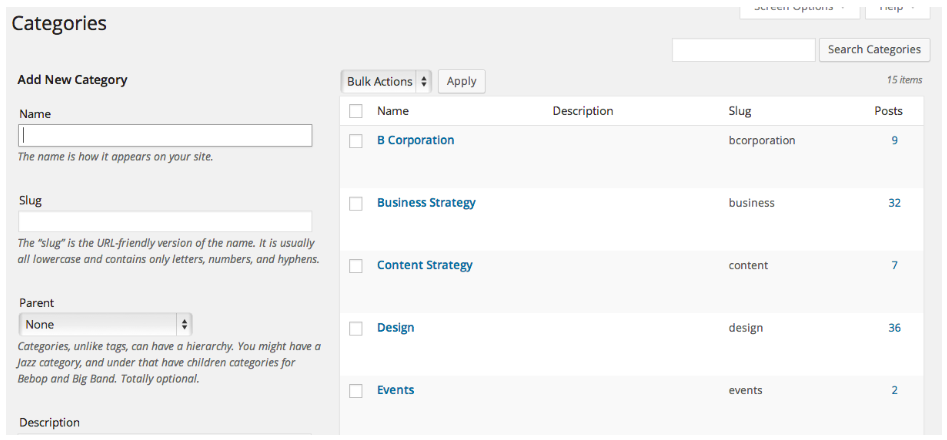
How Many Categories Should a Website Have?
The general usability rule of thumb is that you should limit the options on a list to seven plus or minus two options. That means that you should have no more than nine items on a list, and ideally no fewer than five items. Psychology and usability studies have shown that people have trouble negotiating too many options. So if your goal is to use categories to help people easily navigate to the information they need, keep this rule in mind.
However, for large-scale websites with a lot of content, where categories are not actively being used in a list format to facilitate navigation, there might be a strategic SEO advantage to creating a larger list of categories.
Optimizing Landing Pages for SEO
With the help of a web developer, you can use categorized content to create new landing pages on your site that are SEO optimized for a particular keyword.
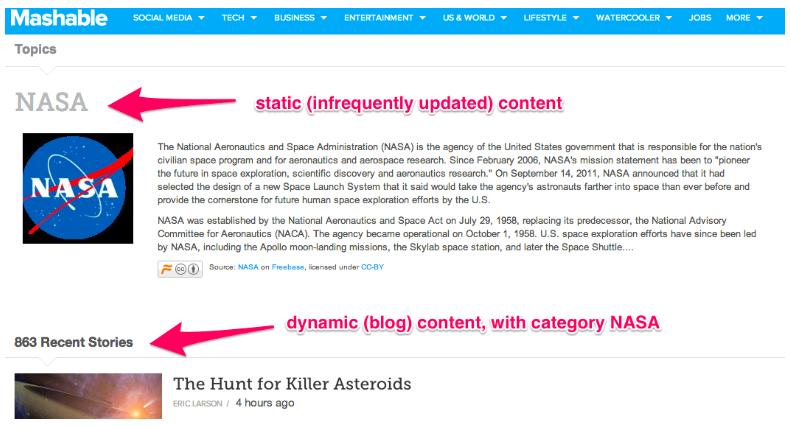
Alternatively, you can pull posts on a certain topic into a portion of a landing page. For example, you could pull blog posts with the category “Events” into a single column on your homepage to feature the content in a different way.
Categories and Search Within Your Site
A developer can also set up your site search so that a reader can filter their search results for content within a particular category. (For example, you could search for the word “Frozen” only within the “Film Reviews” category.)
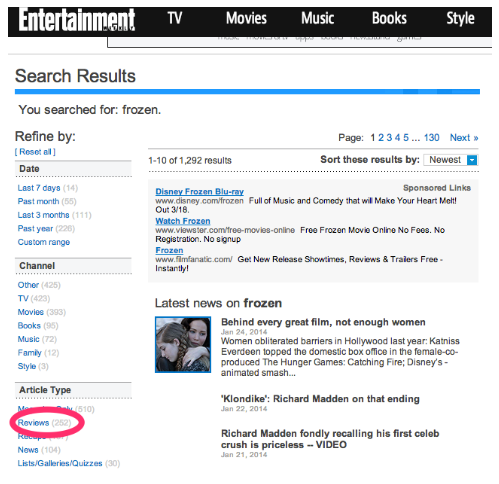
Subject Specific RSS Feeds
For larger blogs with a lot of content, creating RSS feeds associated with a single category of posts such as BuzzFeed Celeb can be helpful to some readers.
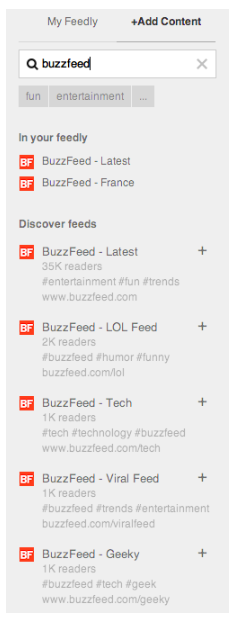
Because categories can be used to create new URLs, such as landing pages around a particular topic, you should avoid using apostrophes and special characters when creating a category name.
What are Tags?
So how is a tag different than a category? Tags can be used to group content together across categories, based on something that they have in common. For example, a library could publish a series of blog posts on music, films, books and events related to African American History Month.
Here are some circumstances in which it’s helpful to use tags:
- Content Campaign: Use tags when you’re publishing a series of blog posts around a particular topic.
- Seasonal content: Use tags to group content that only needs to be discovered by customers at certain times during the year, such as holiday events or holiday gift ideas. This will help prevent your evergreen category list from getting too long.
- Sub categories: While you might categorize something as an event, you might use a tag for certain types of events, such as sporting events.
Party of One
A common mistake that people make on their websites is to create a tag that’s only being used on a single post. Because a tag is meant to help people find a group of posts on a particular topic, this can actually cause frustration for your website visitors.
How to Integrate Tags into Editorial Planning and Content Workflows
While site content managers should have the freedom to add new tags on the fly, as they are publishing a blog post or piece of content, a best practice would be to have a developer allow a content editor to select frequently used tags. This will prevent alternative spellings and abbreviations (having one tag that is capitalized, for example, and one that is lowercase, or having one tag that says “United Nations” and one that says “UN”).
You want to avoid creating duplicate tags that are similar to each other, like “Magazines” and “Periodicals.” That content is likely the same, and should only have one tag.
I don’t think that it’s necessary to limit the number of tags that you create as you limit categories. The best way to manage the creation of tags is to have clear editorial guidelines and content creator training on this subject. For example, if you always use the word “sustainability” instead of the word “ecology”, this should be documented in the editorial guidelines your staff uses while editing and publishing content.
Consider including tags as part of your editorial planning process. For example, when launching a new content campaign, consider both the hashtags and tags that you’ll use as a part of that campaign.
Check your list of tags every so often, like once a quarter or a few times a year. Cut any tags that are only associated with one post, then look for terms that are similar to each other.
Tags and Social Media
Tags can be helpful when promoting content on social media. For example, we regularly promote content tagged “Sustainable Web Design”, which is part of our Sustainable Web Design blog post series.
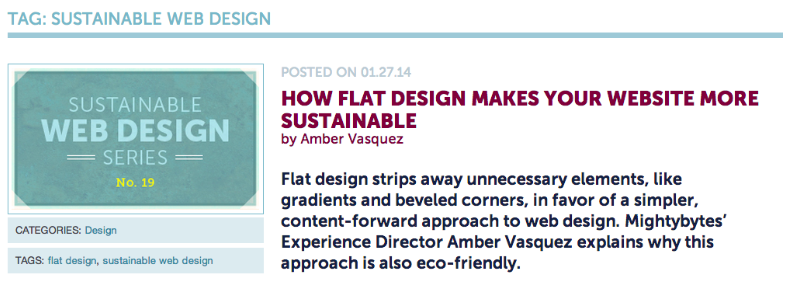
Tags can give nimble social media managers a flexible way to promote a group of content on demand. Because social media changes by the minute and requires quick if not instantaneous responses, this is a good reason to keep your tags strategy flexible and to not restrict the creation of tags too much.
Related Content
You can use both categories and tags within a blog post to encourage people to view other posts within a series, such as “read more film posts” or “read more posts on African American History month.” There are a number of plugins and tools for WordPress and Drupal that display related posts for readers who want to continue exploring a particular topic. Tags can help categorize these related posts.
Tags can also be used within an author’s bio associated with a blog post. For example, if an author has written a number of film reviews, you could include a line in their bio that invites the reader to read more film reviews, or to read more film reviews by the same author.
How do you use categories and tags on your website? Share your ideas in the comments below





